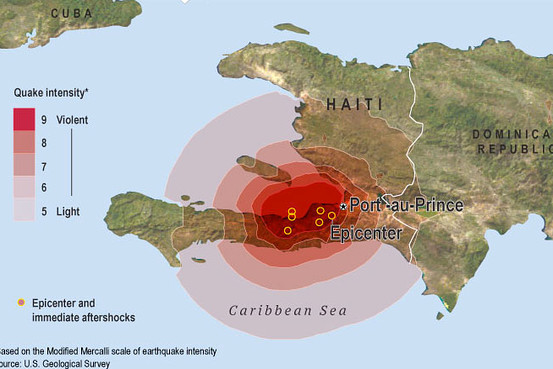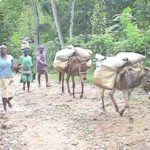Professor. Mark Schuller’s Smoke and Mirrors in Haiti* goes far in opening a window into the twisted truths, exaggerations and self-fulfilling prophecies that still bubble forth from post-earthquake Haiti, mostly from NGOs, UN organizations, and activists like Schuller himself. Putting aside what strike me as an almost personal attack—accusing me of leaking the report and of actively blogging the story in an attempt to attract the press–here’s a list of clarifications (for those interested in a more extensive discussion see my ‘long version’ by the same name),
- Whoever it was who sent the BARR to press, technically the report was not “leaked.” It had been vetted and approved for publication by USAID-Haiti staff(my blogs came after the story broke).
- USAID-Haiti (as opposed to USAID-Washington) never repudiated the findings of the BARR report. They simply said they had not commissioned the death count.
- The death count was in fact an integral part of the task I was commissioned to do. My job was to estimate the number of people who had returned to their homes. That task could not be accomplished had we not known how many of those people were dead, a point so obvious as to make the frequent claim from activists like Schuller that I was somehow acting as a rogue researcher absurd. (Had we used the Haitian government estimate of 316,000 fatalities, we would have had some 20,000 extra people; and we still would not have even begun to explain the people in camps).
- It was USAID-Washington staff that rejected the BARR survey findings, saying, “The study didn’t include data from heavily damaged areas in Haiti’s countryside or from the number of houses that collapsed and killed people.”This statement is simply false. One can only conclude that there were political reasons for issuing it, specifically, to escape the outcry from the Haitian Government. Whatever the case, it killed the controversy over the death count. I among many was glad to see it go. Why Schuller wants to revive the issue, I don’t know.
- The government counting methods were indeed seriously flawed. In fact, there were none. It was not me who concluded this.AP, Miami Herald and Radio Netherlands journalists all came to the same conclusions.
- There are at least four other studies of which I am aware that corroborate the BARR death count findings. I know of not a single study that supports the government issued claims of 220,000 deaths nor their later claim of 316,000
- In every case in which there is solid data with which to crosscheck other BARR findings, the data is substantiated; that’s one reason why USAID-Haiti approved the findings.
- Schuller tells us that the Muggah and Kolbe study is, “much more methodologically grounded.” But he offers no indication that he even knows what the methods were–in either study. Schuller is also apparently unaware that they too found that less than 10% of people in the camps came from destroyed houses.
There are other critiques launched by Schuller that are simply wrong or misleading. Perhaps more telling than anything is what he does not reveal about the camp studies carried out by the French NGO ACTED and in which he was involved. ACTED found that 92 of the 1,152 sites visited had only empty tents (no one was living there—no one at all). Of the 1,061 camps that did have tents with people living in them, 712 (67%) contained at least some empty tents. In one area (Ganthier), 73% of the 213 tents were empty. In the commune of Croix-Des-Bouquets, 6,525 tents located on 63 sites were empty (30% of all tents in that area). In the southern regions of Grand Goave 736 empty tents located on 34 sites were empty (49% of tents all tents in that area). In Léogâne, 1,770 tents located at 74 sites were empty (36% of all tents in that area). Overall, 15% of all tents in the sites that ACTED checked were empty. As for how many people in total were living in those tents that did have people in them and how many were lying about it: we don’t know exactly but, to their credit, IOM personnel did report that the average household size in the camps was 4.1, and in some areas as low as 3.3 (compared to 5.2 to 5.8 for Port-au-Prince homes), something that suggested to the authors of the IOM report that, “some IDPs have decided to keep some household members in the IDP sites so as to retain access to services in the sites, while other family members return or resettle elsewhere.” But despite all of that, Schuller and the IOM authors used their findings to defend the camps as full of authentically homeless. (Now there are some ‘smoke and mirrors.)
Are there poor people in the camps? Of course there are. The majority of the Haitian population is impoverished. We all knew that before the earthquake. But I think the most important point that should come out of this controversy is that these twisted vistas from NGOs, UN organizations and activists such as Mark Schuller obscure much harsher truths. What we saw in Haiti regarding the camps, their growth and the poverty that drove that growth has arguably less to do with the earthquake and more to do with two centuries of meddling in Haitian affairs on the part of the major international powers (for those interested in details I invite them to read my 2008 book, Travesty in Haiti and my upcoming book The Island of the Damned). Today, with the help of well intended activists such as Schuller, it’s as if that history is being rewritten so that economic despair begins with the earthquake.
Why?
The death count and depiction of camps are only two examples of the misinformation that were used to collect over US$2 billion in aid, most of which got squandered on NGO, UN, and foreign governments’ administration costs and salaries. And it is there, in the money, that I think lays the best explanation for the exaggerations and twisted truths we see coming from pre- and post earthquake Haiti.
In concluding I want to say that, like Schuller. I consider myself working on behalf of, and for the good of, the poor in Haiti. But I and others who are more anthropologist than activist subscribe to a different method of accomplishing that task. We think of ourselves as devoted to using scientific methods to help donors understand what is really happening in Haiti. I would argue that this is the only responsible way that we, as outsiders, can give an authentic voice to the impoverished Haitians who, as Schuller will certainly agree, are so often ignored. If Mark Schuller, or anyone else would like to discuss what those methods are, I would welcome the opportunity.
* SMOKE AND MIRRORS IN HAITI, by Professor Mark Schuller, published in Counterpunch, Dec 21, 2011
Note that Counter Punch–you know, the guys who “tell the facts and name the names” (and who I used to like)–published Schuller’s piece. Not only would that not publish even a commentary response from me; they wouldn’t even respond to my emails.








